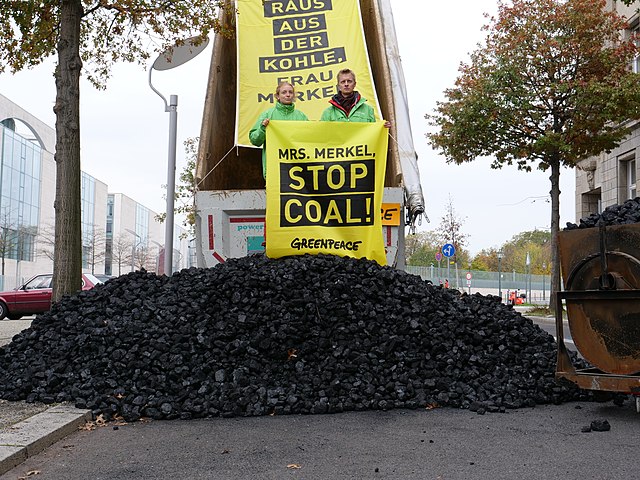 “We tried sitting in the roads, we tried blocking oil terminals, and we got virtually zero press coverage - yet the thing that gets the most press is chucking some tomato soup on a piece of glass covering a masterpiece” -- Mel Carrington, a protestor
“We tried sitting in the roads, we tried blocking oil terminals, and we got virtually zero press coverage - yet the thing that gets the most press is chucking some tomato soup on a piece of glass covering a masterpiece” -- Mel Carrington, a protestor
Recently, protestors have been throwing food at famous paintings as a way to draw attention to climate change. In October, a group of activists threw tomato soup at Vincent van Gogh’s Sunflowers.
Earlier this year, climate activists glued themselves to the frame of van Gogh’s Peach Trees in Blossom, a man disguised as an elderly woman smeared cake across the Mona Lisa, and many other protestors have acted similarly in museums at Glasgow, Florence, and the Vatican, and several London galleries.
Why are protestors taking such extreme action? Are such protests effective? Let’s explore this further.
Why Protest?
 Many climate activists are frustrated with the lack of action by governments to stop burning fossil fuels and address the climate crisis. Their goal was simple: to spark an emotional reaction.
Many climate activists are frustrated with the lack of action by governments to stop burning fossil fuels and address the climate crisis. Their goal was simple: to spark an emotional reaction.
According to Anna Holland, an activist, she would like to see people extend the protectiveness they feel towards a famous painting to life on Earth.
Last Generation, an organization whose protestors threw mashed potatoes at Monet’s painting, Grainstacks, in Germany, has demanded a 62-mile-per-hour speed limit on German highways. This would save 5.4 million tons of carbon dioxide per year. Additionally, they claim that a flat-fee ticket for railroad trains will decrease emissions by encouraging the use of public transit.
This is not the first time protestors have targeted art before. Nearly a century ago, suffragists attacked the painting The Toiled of Venus, and experienced backlash from the press.
Two Sides of a Coin
So what kinds of protests have been successful in the past? Most effective protests have had a direct connection to the reason for the protests. Many civil rights protestors raised awareness about racial segregation laws by breaking them. Greenpeace activists targeted whaling ships and nuclear sites. This is different from the climate protests of today.
So how effective are these protests? Some question how well thought-out the protests really were. However, many others disagree and claim that the conventional means of protesting have not worked. They see art as a metaphor that represents an economic system that destroys our Earth’s sustainability.
What effects are we actually seeing? Many museums are employing staff to keep an eye out for food, and one museum, the Barberini even announced that it would close until October 30th. As these climate protests become more popular across Europe, museum directors like Hans-Peter Wipplinger of Vienna’s Leopold Museum have had to take extreme measures to protect their collections. These include banning bags and coats, hiring extra guards to patrol museum doors, and even considering starting invasive body searches.
What do you think? Is vandalizing art an acceptable way of protesting?
Sources: NY Times, Smithsonian, History.com







